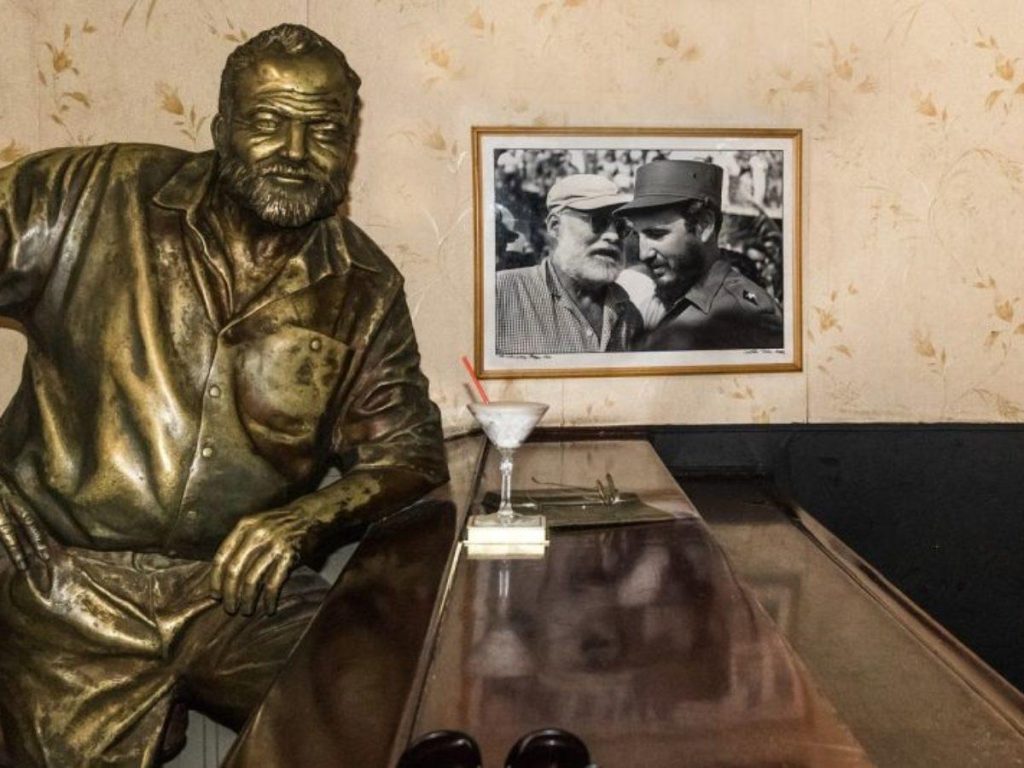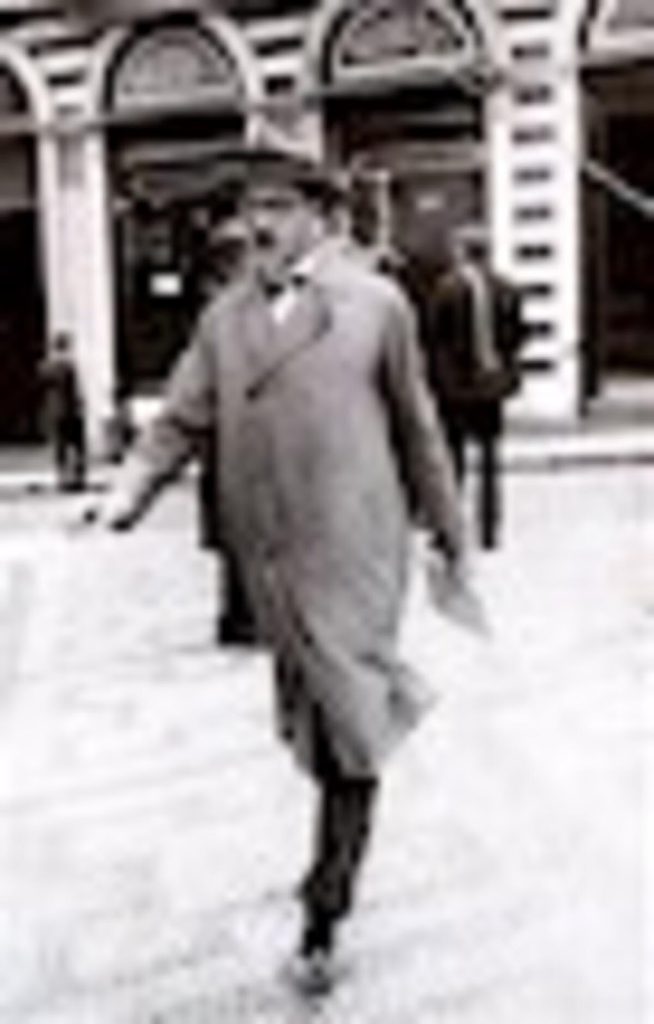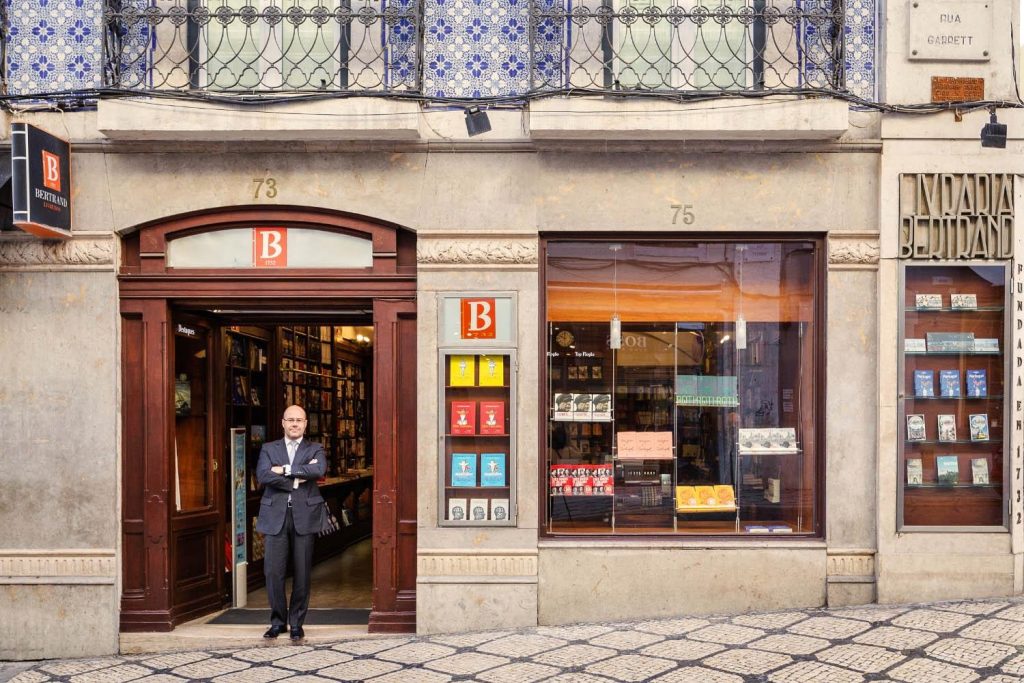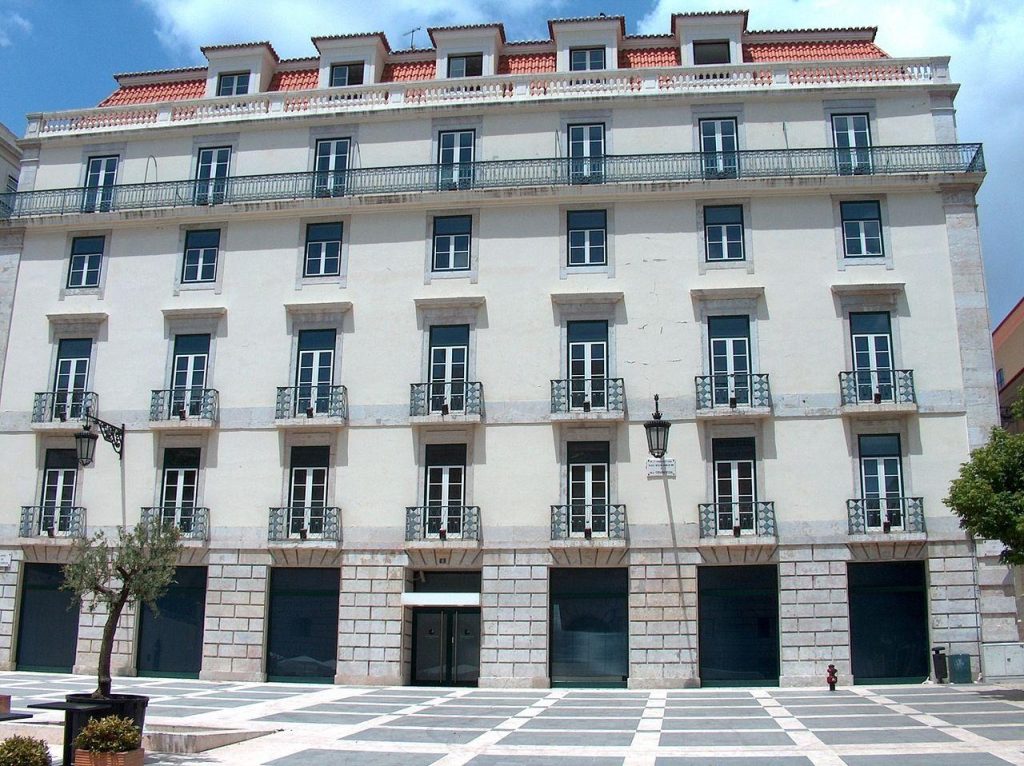Location: various locations
Duration: If you follow part 1 and part 2, your day will be almost full.
1. Café A Brasileira
Address: Graça Plaza
How to get there: Baixa-Chiado metro station, exit Baixa
Close to the square where the most famous Portuguese poet, Luis de Camões, has a statue, Praça Luis Camões, next to the entrance to the metro, is the terrace of Café A Brasileira, a café that opened in 1905. Fernando Pessoa is sitting at a table on the terrace. He is being photographed incessantly by someone who sits down on the chair next to him, but he remains cool.

He sits there like his colleague and contemporary Hemingway in Havana at the bar in El Floridita. Relaxed, with a drink. Because Hemingway and Pessoa also had that in common: their great love of alcohol.

But otherwise, these contemporaries are as different as night and day, leaving it up to you to decide who is day and who is night. A small example is Hemingway’s friendship with a dictator (see the photo in the picture) and Pessoa’s dislike of Salazar, the Portuguese dictator.
Fernando Pessoa (1888–1935) is best known for his heteronyms, the many splintered versions of the writer, each with a different body of work. The best known are Alberto Caeiro, Álvaro de Campos, Bernardo Soares, and Ricardo Reis. For Pessoa, human beings are not one-dimensional, but made up of multiple layers. Freud’s “I am not the master in my own house” is expressed in his heteronymic work. And, funnily enough, heteronyms also wrote comments about each other. His best-known work is The Book of Disquiet. That book was only published after his death, more about that later.
Only a few photos of him are known, such as this blurry one:

Pessoa, perhaps on his way to the terrace of Café A Brasileira. He looks comfortable sitting here on the terrace of the café. His drinking contributed to his early death, as described by Antonio Tabucchi, an Italian Pessoa expert, in The Last Three Days of Fernando Pessoa, as far as I know not translated into English. It is a short novella in which Pessoa’s most important alter egos come to say goodbye during the last three days of his life. It is described as delirium.

“He lay in a modest room with an iron bed, a white wardrobe, and a small table. Pessoa lay down on the bed, turned on the lamp on the bedside table, rested his head on the pillow, and stroked his right side with his hand. Fortunately, the pain had eased somewhat. The nurse brought him a cup of water and a tablet and said, ‘Excuse me, but I have to give you an injection, doctor’s orders.
Pessoa asked for a dose of laudanum, a sleeping pill he was accustomed to taking when, in his capacity as Bernardo Soares, he was unable to sleep. The nurse brought him what he asked for and Pessoa drank it. “My name is Catarina,” said the nurse. “If you need anything, just call me and I’ll come right away.”
We are still on the terrace, sitting next to Pessoa. But others are eager to take our seats, so we leave Pessoa here on the terrace, because since his death he can be found in several places at once in Lisbon. So we’re on our way, but first we take a look inside what the sign on the facade says is the oldest bookshop in Lisbon, Livraria Bertrand, on R. Garrett, opened in 1732. It is even said to be the oldest bookshop in the world. It is everything a bookshop should be, but almost never is anymore. At the back is a café.

After the bookshop, we walk back a little, turn left into R. Serva Pinto and head for a square on the right with Pessoa’s birthplace, opposite the national theater. In front of that house is another statue of him.
2. Pessoa’s birthplace
Address: Largo de Sao Carlos
Cost: Free

In this photo, the statue is not yet visible, but you can see the sign on the wall, just behind the lantern, indicating that Pessoa was born here. Nevertheless, the statue is well worth seeing. The way Pessoa is depicted shows that he was certainly not an open book.

If we compare Pessoa to Hemingway, Hemingway is a straightforward writer, while Pessoa writes in a labyrinthine, searching, ambiguous style. Here’s an example:
(Bernardo Soares) I wish I were in the country, so that I could wish I were in the city. I love being in the city so much, but that way I would enjoy it twice as much.
He is a truly remarkable writer, because he also wrote rather boring detective stories and a not very interesting travel guide to Lisbon. Originally written in English, Pessoa also translated into Portugues. The travel guide was published long after his death. But who am I to criticize someone who is considered by many to be one of the most important writers of the 20th century?
For the next step in Pessoa’s footsteps, we have to go to the house where he lived. That house is located in the Ourique district. The easiest way to get there is to take the yellow tram 28 to Campo Ourique from Praça Luis Camões. However, this tram is often very crowded, so hopefully you will be able to get on. Get off at Praça de Estrela. Perhaps take a look inside the church, and then walk a short distance.
3. Pessoa’s house (now a museum)
Location: Casa Fernando Pessoa
Address: Rua Coelho da Rocha, 16-18 Campo de Ourique
How to get there: Tram: 25 and 28; Bus: 709, 713, 720, 738, and 774
Cost: 5 euros. Tickets also available online.
Opening hours: 10 a.m. to 6 p.m. Closed on Mondays.
Pessoa lived in what is still a normal street with residential houses. His house has been turned into a biographical museum.

The museum naturally houses the famous mysterious box containing 27,543 manuscripts, which was found after his death.

I don’t know if the box in the museum is the real one, I suspect not, but this box plays an important role in the reception of Pessoa. It took until the 1980s before the documents were deciphered. In 1982, the first edition of The Book of Disquiet was published. This was followed by new editions in 1986, 1990, and 1998. New editions of the latest version have been published, each time with further revisions.

This accumulation of changes has to do, on the one hand, with what was found in the box, but on the other hand also with the fact that the texts were in undated envelopes. What is the correct order? And what belongs in the book and what does not? The famous Book of Disquiet has therefore been regularly revised and only became semi-definitive around 2004.
The museum is tastefully decorated and provides a nice overview of Pessoa’s life and work. On the website (which is very slow), you can also take a virtual tour of the museum, but it is much better in person.
After your visit, enjoy a nice cup of espresso at a reasonable price in the café and then move on to the next stage. You can walk back to the tram, or continue on to the Cemitério dos Prazeres. It’s only about two tram stops away, so it’s not too far.
In two weeks, we will continue our Pessoa journey.
Arko Oderwald